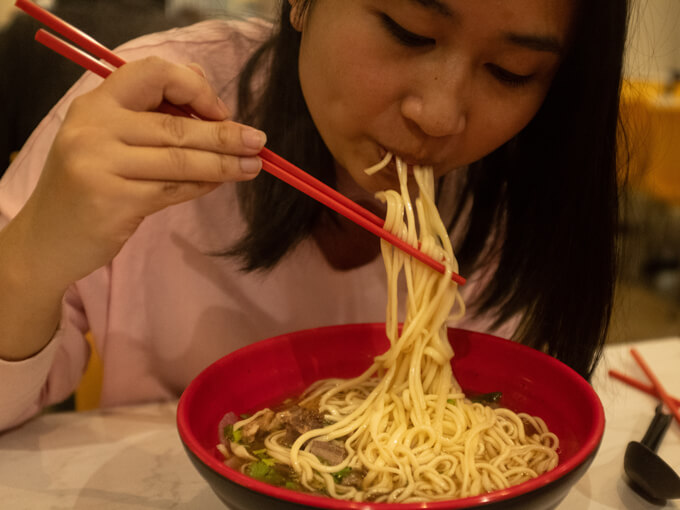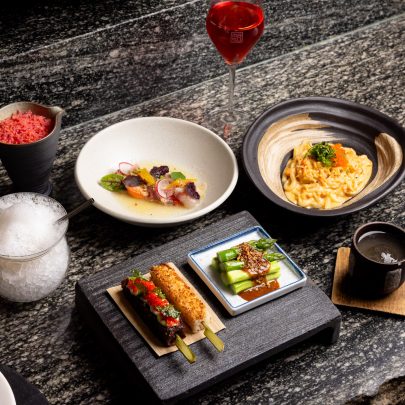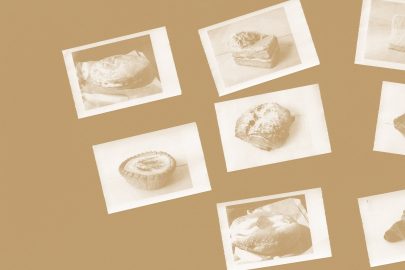Aug 12, 2019 Food
Jean Teng has never known how to use chopsticks, despite being Malaysian-Chinese and spending the first five years of her life in Asia. She writes about assimilation, and what it means to be “Chinese enough”.
Did they really have to include chopsticks?
I’m looking at a PR picture for a Vietnamese dish from a prominent Auckland restaurant. It’s clearly Vietnamese: the rice noodles, the fresh herbs piled on the side, the nuoc cham sauce. And yet, chopsticks. The unneeded reminder this dish is exotic. And the unneeded reminder I don’t know how to use them.
In many South-East Asian countries, including Malaysia where I’m from (my family is Malaysian-Chinese), we use a fork and spoon to eat rice and other dishes, but chopsticks for noodles, and yum cha, and other miscellaneous slippery titbits. Before moving to New Zealand aged five I only used a fork and spoon because I was an awful and stubborn child, and after we moved chopsticks weren’t a priority. As dramatic as it sounds, assimilation was.
When I’m using them my chopsticks cross over one another like pick-up sticks. I have at various points in my life attempted to properly master the technique, mainly because I dine out at a restaurant where it’d be good to know how to wield a pair two or three times a week.
READ MORE: On Asian glow, and everyone’s obsession with getting drunk
My inability to use chopsticks reached such a point of absolute embarrassment in my adult life I felt the only way to counter it was own the narrative and tell everyone who would listen that I couldn’t use them; to flip it into a funny bit that framed me as, like, irreverent and self-deprecating. But having a white person offer to teach me how was a truly humbling experience – and by humbling, I mean I wanted to watch the whole world burn, with them in it. Sometimes I have nightmares about eating in front of a big-shot, someone affluent in the food writer world. Like, I’m sat in front of David Chang, he’s interviewing me for Ugly Delicious (this is my subconscious), we’re eating dumplings, and then he stops mid-sentence. He says to me, “What kind of Asian can’t use chopsticks?”
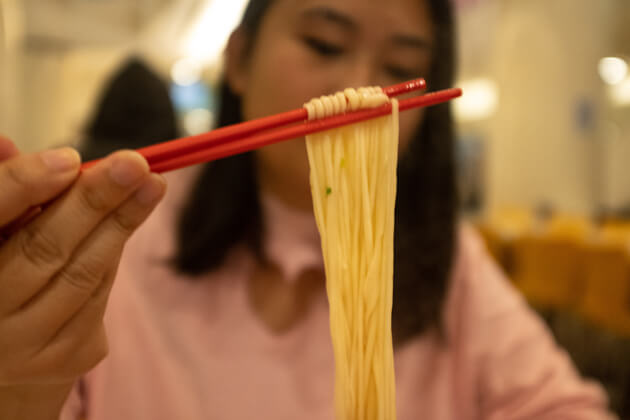
“Sorry,” I say to a waitress. “Can I grab a fork and spoon?” In that moment I’m reminded of every waitress who instinctively speaks to me in Mandarin, or the elderly grandmother at the bus stop who can’t figure out the timetable. “Sorry! I can’t speak Chinese,” I say. I used to feel so proud saying that. “I can’t even speak Chinese!” Only speaking English was yet another way which I could distance myself from acting or being too Chinese; it was an audible reminder that I belonged in New Zealand, fully.
Enough is enough. It’s time to learn how to use chopsticks, once and for all.
My dad is yelling at me.
He’s yelling at me the same way he yelled at me when I scraped a parked car the first time I got on the road. “Why didn’t you listen to me?” Or the time I couldn’t quite get the knack of a maths problem we were going over for homework. “Are you deliberately not trying?”
My dad uses chopsticks “perfectly” (his words). He holds them like a pen, like you’re supposed to, the implements directly parallel and closing in around the last grains of rice in a bowl. I have been known to resort to scooping those last grains out, dabbing them with my finger tips and licking them off.
“I’m trying!” I yell back. I am, but it’s as if my muscles are atrophied, my fingers not quite strong enough to follow through on the mechanical motions of clamping down. I can mimic the up-and-down, see-sawing motion without crossing over, but when I try to pick something up, the whole operation falls apart. It slips.
“You have a real attitude problem,” my dad says.
I’m at a Korean restaurant. The chopsticks are metal.
Sometimes, I’ll use chopsticks in my left hand and a spoon in my right, the left-handed chopsticks a surrogate fork. People do not comment on this when I eat out with them – perhaps they think it’s a traditional technique where I’m from. I don’t do anything to dissuade them of this notion.
Today I transfer the chopsticks to my right hand. It’s come to a point where I’m experimenting with non-traditional techniques. No more reading the diagram “How To Use Chopsticks Like Mr Miyagi” on a website called “The Art of Manliness” (yes it came to this). I’ve looked at so many diagrams in the last two weeks that if I close my eyes I could see perfect step-by-step instructions: outlines of hands, reassurances of authenticity.
I change the finger the bottom chopstick rests on. Ring, middle. I try imagining I’m holding a quill. I think about the films and television shows I’ve watched with Asian families, including many small children, sitting around the table with chopsticks in their hands. They’re around me now. My eyes zoom in on their effortless motions.
It’s endlessly frustrating. It seems like the bottom chopstick keeps slipping from my knuckle, sliding down every time I move my finger. It’s not anchored. It constantly feels like my hand is one second way from cramping.
At the end of the meal, I half-heartedly practice. Up, down, up, down – like a robot.
“You’d think it’d just come naturally to me. Like, genetic?”
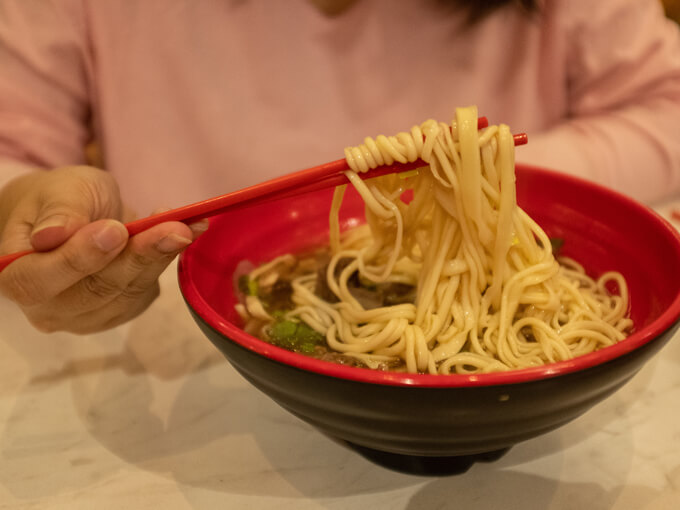
In Japanese class when I was eight years old, we practised using chopsticks by picking marshmallows up. If we managed to get one, we had to say a fact about ourselves. It seemed like a punishment.
I had no problem wrangling them into my mouth… with crossed chopsticks. According to many “How to Use Chopsticks” guides on the internet, this is considered “offensive”. The internet also informs me that crossed chopsticks “represent death itself” in China. No one told eight-year-old me that.
In a troubling act – or maybe just light-hearted fun, ha, ha – I tear open a bag of marshmallows one weekend to re-do this exercise, the “right way” this time. I’ve been delving into YouTube tutorials, most of which are unnervingly upbeat, declaring any idiot could master the technique in two easy minutes. Animated graphics chirpily lead the way, dancing dumplings cross the screen. “How To Use Chopsticks like an Asian”, one video is titled.
A marshmallow drops from between my sticks onto the ground, and my dog hoovers it up.
Rice is my favourite food in the world. Do I need a reason? If I do then I guess it’s this: I’ve eaten it every day of my life for as long as I can remember.
I’ve made progress with the chopsticks, which has shockingly come from a little-known technique I’ve never attempted with any sort of longevity in the past: practice. Maybe my dad was right, maybe my attitude did suck.
Polishing off an entire bowl of rice with chopsticks feels like the test. Those stubborn little clumps at the bottom are hell to manoeuvre if you’re not quite dexterous enough. I’m determined not to get through three-quarters of the bowl and resort to spooning up the rest.
One day at a Chinese restaurant I felt suddenly ready. Could I finally stop looking wistfully at forks and spoons as I struggle with chopsticks? Could I finally stop feeling awful because white people could access this part of “being Chinese” that I seemingly couldn’t master, waving it in my face how cultured they were?
That day, I did it. My fingers moved the chopsticks the way they’re meant to, without crossing over, picking up the last of the grains.
It felt very anti-climactic. More importantly, it didn’t really make me feel any more Chinese.
I knew it wouldn’t, and yet it still felt like it might have. It had been a chip on my shoulder for so long, the first rung in a ladder of things I could do to make myself more “Chinese”: play the piano (as my two older sisters did), learn the language, grow to love eating offal, get more Chinese friends. All things I missed out on thanks to the years I tried to reject anything I worried was stereotypical. And as I broke away from that fear in university, I started to look for superficial ways to claw my identity back. But I’m growing to learn that what makes me Chinese goes beyond my aesthetic assumptions, beyond performing an indefinable “Chineseness” and trying to “fix” the things about myself that resulted from my upbringing in New Zealand. I can’t fix them. And should I want to? Being New Zealand-Chinese is its own identity. It is not a dilution.
Learning the language may connect me more to my roots and allow me to communicate more empathetically with my extended family, but it won’t make me more Chinese. Even with these newfound chopstick skills, I was just as Chinese as I’ve always been. Which is to say: completely.
My chopstick skills are still not perfect. They cross over constantly, I still pick up dumplings with my fingers, and I’ll steal serving spoons at Chinese restaurants. I hold my noodles between crisscrossed sticks and sneak little glances around. I really hope I’m not offending anyone.
No one looks. I still belong.
Follow Metro on Twitter, Facebook, Instagram and sign up to our weekly email

